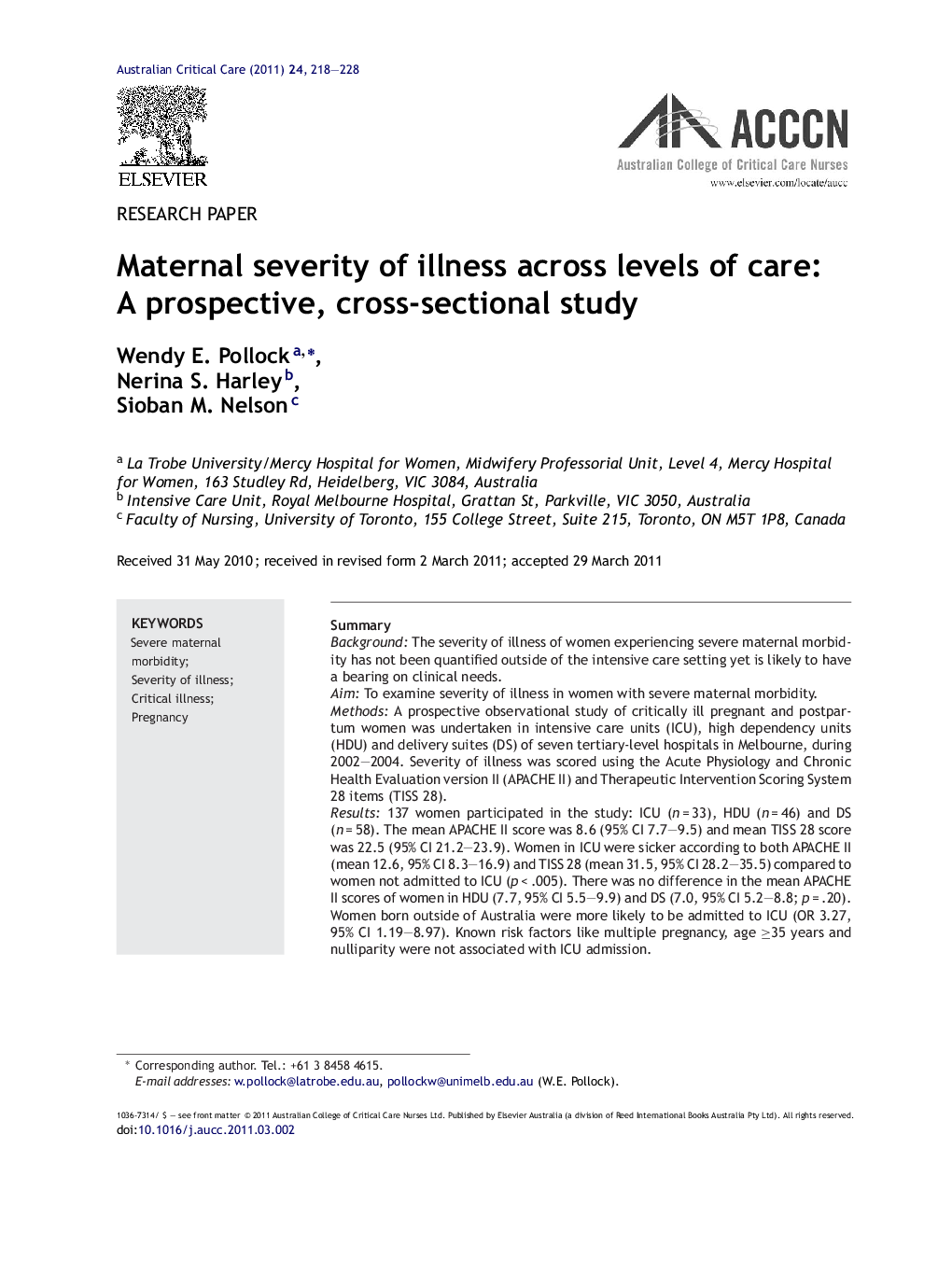| Article ID | Journal | Published Year | Pages | File Type |
|---|---|---|---|---|
| 2606762 | Australian Critical Care | 2011 | 11 Pages |
SummaryBackgroundThe severity of illness of women experiencing severe maternal morbidity has not been quantified outside of the intensive care setting yet is likely to have a bearing on clinical needs.AimTo examine severity of illness in women with severe maternal morbidity.MethodsA prospective observational study of critically ill pregnant and postpartum women was undertaken in intensive care units (ICU), high dependency units (HDU) and delivery suites (DS) of seven tertiary-level hospitals in Melbourne, during 2002–2004. Severity of illness was scored using the Acute Physiology and Chronic Health Evaluation version II (APACHE II) and Therapeutic Intervention Scoring System 28 items (TISS 28).Results137 women participated in the study: ICU (n = 33), HDU (n = 46) and DS (n = 58). The mean APACHE II score was 8.6 (95% CI 7.7–9.5) and mean TISS 28 score was 22.5 (95% CI 21.2–23.9). Women in ICU were sicker according to both APACHE II (mean 12.6, 95% CI 8.3–16.9) and TISS 28 (mean 31.5, 95% CI 28.2–35.5) compared to women not admitted to ICU (p < .005). There was no difference in the mean APACHE II scores of women in HDU (7.7, 95% CI 5.5–9.9) and DS (7.0, 95% CI 5.2–8.8; p = .20). Women born outside of Australia were more likely to be admitted to ICU (OR 3.27, 95% CI 1.19–8.97). Known risk factors like multiple pregnancy, age ≥35 years and nulliparity were not associated with ICU admission.ConclusionsThere was no difference in the severity of illness in women cared for in HDU and DS. It was not possible to predict which women would require ICU admission. Measurement of severity of illness adds a valuable dimension to the study of severe maternal morbidity.
